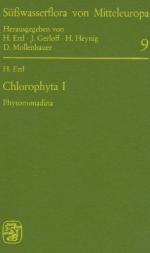|
This section contains 365 words (approx. 2 pages at 300 words per page) |
Chlorophyta are microorganisms that are grouped in the kingdom called Protista. The microbes are plant-like, in that they are able to manufacture energy from sunlight. The microbes are also commonly known as green algae
Depending on the species, Chlorophyta can be single-celled, multicelled, and can associate together in colonies. The environmental diversity of Chlorophyta is vast. Many types live in marine and fresh water. Terrestrial habitats include tree trunks, moist rocks, snowbanks, and creatures including turtles, sloths and mollusks. There are some 8,000 species of chlorophytes, ranging in size from microscopic to visibly large.
There are three classes of Chlorophyta. The first class, which contains the greatest number of organisms, is called Chlorophyceae. A notable example of an organism from this class is Chlorella, which is economically important as a dietary supplement. Another member of the class is Volvox, a spherical organized community containing upwards of 60,000 cells.
The second class is called Charophyceae. Members of this class have existed since prehistoric times, as evidenced by fossil finds. An example of this class is Spirogyra, which form slimy filaments on the surface of freshwater.
The third class is called Ulvophyceae. These are marine organisms. Some become associated with sea slugs where they provide the slug with oxygen and are in turn provided with protection and nutrients. Species of a calcium-rich green algae called Halimeda form the blinding white sand beaches of the Caribbean when they wash up onshore and become bleached by the sun. Another example from this class is Ulva that grows on rocks and wharves as green, leafy-appearing clusters.
Chlorophyta contain structures that are called chloroplasts. Within the chloroplasts two pigments (chlorophyll a and chlorophyll b) are responsible for the conversion of sunlight to chemical energy. The energy is typically stored as starch, and in their cell walls, which are composed of a material called cellulose. The stored material can be used for energy as needed. This process of energy generation is similar to that which occurs in plants. There is an evolutionary basis for this similarity. Available evidence indicates that members of Chlorophyta were the precursors of plants. Chlorophyte fossils date from over one billion years ago, before the development of plants.
|
This section contains 365 words (approx. 2 pages at 300 words per page) |


